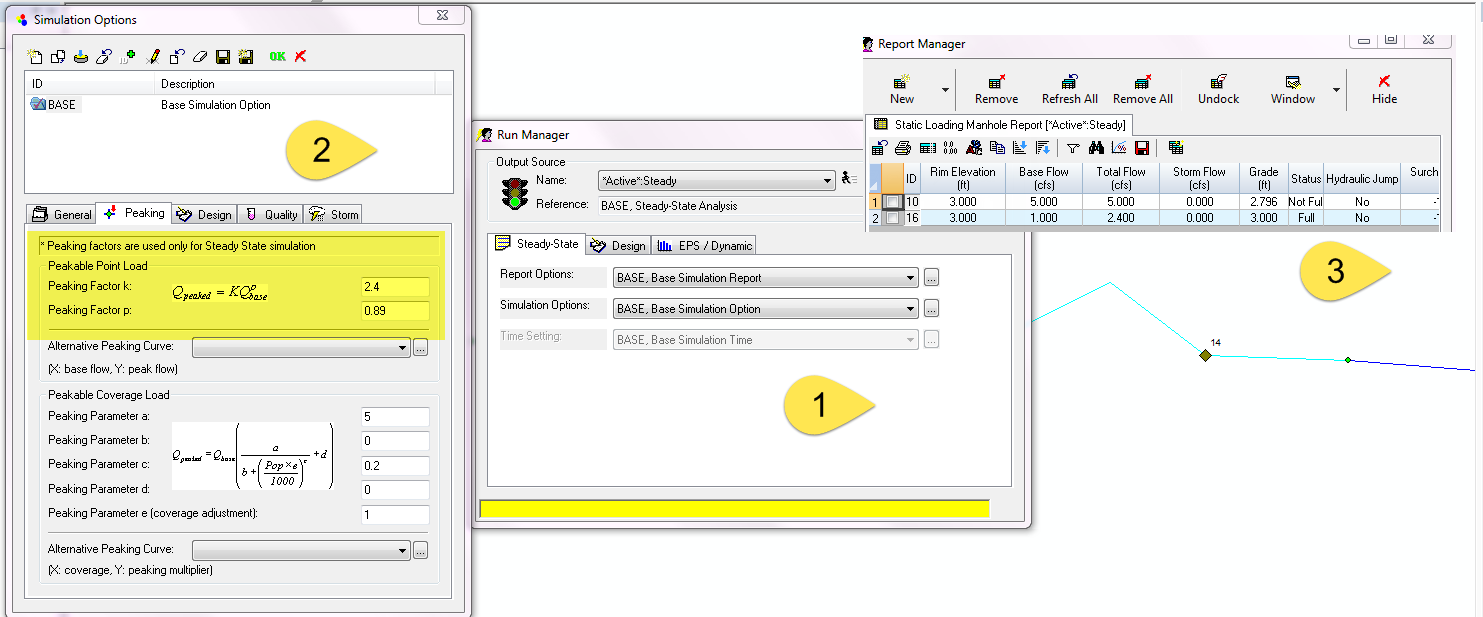The 1st method would be to use Arc Map Layer properties and label multiple parameters for each gravity main or force main. The image below shows and example and here is the code inside of Arc Map to do this
Function FindLabel ( [DIAMETER], [Pipe.SHAPE_Length], [COEFF] )
FindLabel = [DIAMETER] & " m / " & " " & [Pipe.SHAPE_Length] & " m / n " & [COEFF]
End Function
 |
| Arc Map Label Annotation |
Or
Function FindLabel ( [DIAMETER], [Pipe.SHAPE_Length], [COEFF] )
FindLabel = " D= " & [DIAMETER] & " m / L=" & " " & [Pipe.SHAPE_Length] & " m / n " & [COEFF]
End Function
 |
| Label Properties in Arc Map or Arc GIS |
The 2nd method is to use Annotation and Map Display in InfoSewer
If you want to show both pipe diameter and slope on the map of InfoSewer you will have to workaround the limitation of having only one map variable:
1. You can map the diameter using Map Display and then
2. Use the Annotation tool to show the 2nd variable such as Length or slope.
3. Here is an example with different colors for diameter and length
 |
| Map Display and Annotation in InfoSewer |






























